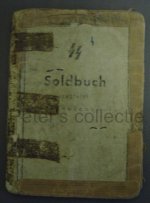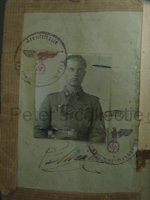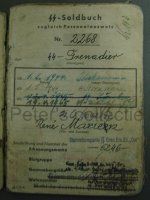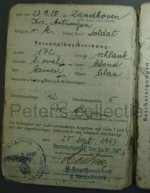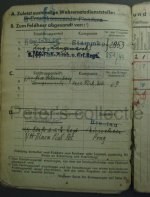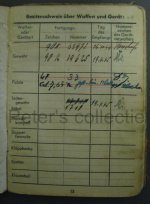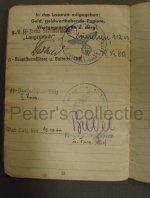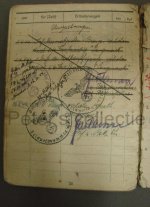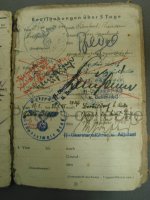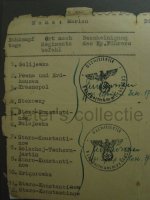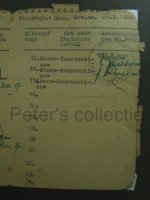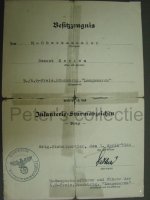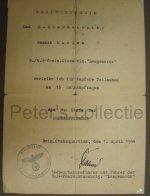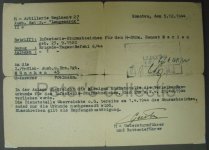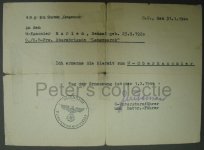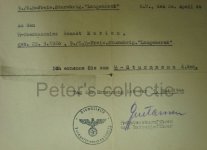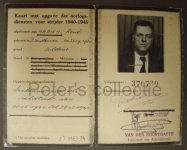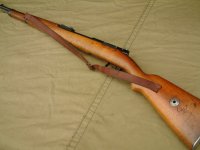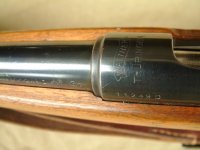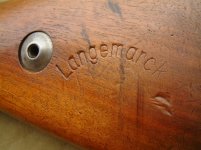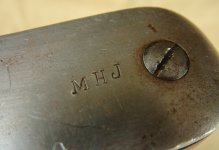Hello,
This Soldbuch grouping has been in my collection for a year or two now and according to me it is one of best in my collection, so I hope you all enjoy viewing this thread.
The Soldbuch belonged to René Marien, a Flemish volunteer in the 6th Freiwilligen Sturmbrigade "Langemarck", and this is his story:
- René Marien was born on September 23 1920, on January 3 1939 Rene marien joined the Belgian army voluntarly starting his conscript military service earlier, he joined the 10th company of the 8th Line Infanry Regiment.
During the mobilization he was promoted to corporal and when the war broke out on May 10 1940 he was with his unit the entire 18 day campagne.
On May 28 1940 he was made POW but his time as a POW was short, because he was Flemish the German army released him so that he could return home, which he did on June 15 1940.
From the summer of 1940 till the fall of 1943 I have no information on him.
In September 1943 René Marien volunteers for the Waffen SS.
On September 25 1943 he starts his basic training with the Langemarck platoon of the SS Grenadier Ersatz Battalion Ost.
After his basic training he gets a specilist training as a Flak/88mm gunner in the 2.SS Flak Ausb u erz Rgt.
After succesfully finishing training he is appointed to the 9th (heavy Flak) company of the 6th Freiwilligen Sturmbrigade "Langemarck"; this unit has 9 88mm Flak guns and is lead by SS Hauptsturmbannführer Dethier, Marien belongs to the 1st platoon that is lead by SS Obersturmbannführer Gustavson.
They depart to the frontline in the Ukrain on December 31 1943, here they have to defend the crossroad of Staro Konstantinow; this crossroad is on the main route along which the German retreat out of the Jampol pocket.
For a while their battery is assigned to the 2nd SS Pz Div "Das Reich"; it is from this unit he gets his EKII.
- Rene Marien is one of the few survivors of this horrific battle.
In this short time period he gets credited with not less then 15 close combat days.
During combat in February 1944 he is promoted to Oberkannonier, back in the rear he is promoted once again this time to SS Sturmmann.
In the fall of 1944 he is selected to follow an officers training course in Bad Tolz, in January 1945 he is a Waffen SS officers cadet with the rank of SS Juncker in the Junckerschule in Prage.
In April the need for soldiers is extreemly high and he is promoted to Unterscharführer and sent to of to the front, I have no idea if he reseaches the frontline somewhere in that period but I doubt very much that he rejoined his actif unit.
In any case it is sure that he survives the war and is able to come back to Belgium.
He is also able to keep his Waffen SS service secret and thus escapes prosecution, he works the rest of his live as a coalminer, in the 1960 he apllies and gets a warveteran statute!
Notice that he had a pass to travel home on September 18 1944, but I seriously doubt that he went home, his hometown was in the frontline at that time and also the fighting of the Market-Garden operation would have made his journey impossible.
This Soldbuch grouping has been in my collection for a year or two now and according to me it is one of best in my collection, so I hope you all enjoy viewing this thread.
The Soldbuch belonged to René Marien, a Flemish volunteer in the 6th Freiwilligen Sturmbrigade "Langemarck", and this is his story:
- René Marien was born on September 23 1920, on January 3 1939 Rene marien joined the Belgian army voluntarly starting his conscript military service earlier, he joined the 10th company of the 8th Line Infanry Regiment.
During the mobilization he was promoted to corporal and when the war broke out on May 10 1940 he was with his unit the entire 18 day campagne.
On May 28 1940 he was made POW but his time as a POW was short, because he was Flemish the German army released him so that he could return home, which he did on June 15 1940.
From the summer of 1940 till the fall of 1943 I have no information on him.
In September 1943 René Marien volunteers for the Waffen SS.
On September 25 1943 he starts his basic training with the Langemarck platoon of the SS Grenadier Ersatz Battalion Ost.
After his basic training he gets a specilist training as a Flak/88mm gunner in the 2.SS Flak Ausb u erz Rgt.
After succesfully finishing training he is appointed to the 9th (heavy Flak) company of the 6th Freiwilligen Sturmbrigade "Langemarck"; this unit has 9 88mm Flak guns and is lead by SS Hauptsturmbannführer Dethier, Marien belongs to the 1st platoon that is lead by SS Obersturmbannführer Gustavson.
They depart to the frontline in the Ukrain on December 31 1943, here they have to defend the crossroad of Staro Konstantinow; this crossroad is on the main route along which the German retreat out of the Jampol pocket.
For a while their battery is assigned to the 2nd SS Pz Div "Das Reich"; it is from this unit he gets his EKII.
- Rene Marien is one of the few survivors of this horrific battle.
In this short time period he gets credited with not less then 15 close combat days.
During combat in February 1944 he is promoted to Oberkannonier, back in the rear he is promoted once again this time to SS Sturmmann.
In the fall of 1944 he is selected to follow an officers training course in Bad Tolz, in January 1945 he is a Waffen SS officers cadet with the rank of SS Juncker in the Junckerschule in Prage.
In April the need for soldiers is extreemly high and he is promoted to Unterscharführer and sent to of to the front, I have no idea if he reseaches the frontline somewhere in that period but I doubt very much that he rejoined his actif unit.
In any case it is sure that he survives the war and is able to come back to Belgium.
He is also able to keep his Waffen SS service secret and thus escapes prosecution, he works the rest of his live as a coalminer, in the 1960 he apllies and gets a warveteran statute!
Notice that he had a pass to travel home on September 18 1944, but I seriously doubt that he went home, his hometown was in the frontline at that time and also the fighting of the Market-Garden operation would have made his journey impossible.
Attachments
Last edited:



